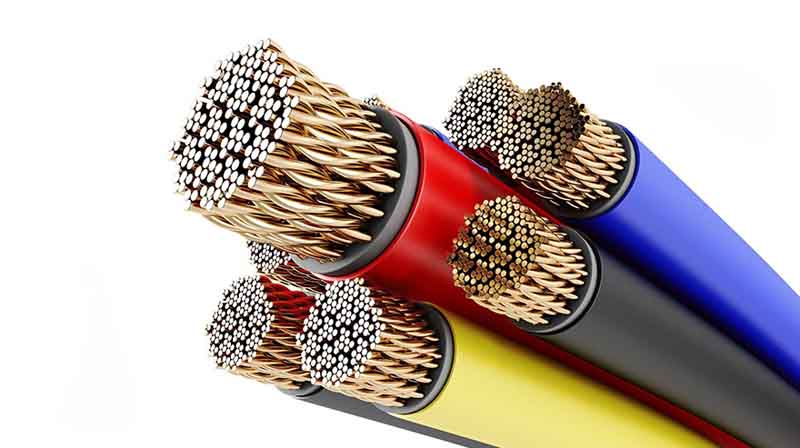With the current developments in the technological field, the concept of wires and cables are popular across every sector whether it is telecommunications, engineering, mechanics, and cybersecurity. The use of wires & cables is all-pervasive and it is becoming an essential concept day by day.
It becomes an essential requirement of the various industries to increase their quality of products in various types of fields & domains.

Definitions of wires and cables
A wire is a single conductor while a cable is made of many conductors. The cable contains a hot wire, neutral wire, & grounding wire. As far as wires are concerned, they can be used to carry electricity, mechanical loads, & the transmission of telecommunication signals.
The cable can also be used in the fields of power transmission, telecommunication, etc. According to its various uses and classifications, it becomes a necessity of the modern technological world. Wires & Cables are not so much different but there is a thin line of difference between them regarding their manufacturing & uses.
Wires & Cables act as veins as they supply the electricity and very useful to establish indoor as well as outdoor systems. It facilitates the usage of electricity & current.
Two types of electrical wires:
- Solid: It contains a single conductor and is protected by a collared sheath. It looks very attractive and has a strong & powerful coating.
- Standard: It has many thin wires and all are twisted together. Various examples are standard wire, twin twisted wire, fire retard low smoke wires, and industrial wires. It is mostly used in across every industry & it is consumer-friendly.
Types of electrical cables:
- Twisted pair cables: It includes two cables that are twisted together. Twisting always makes it strong and attractive with powerful resistance.
- Multi-conductor cable: It contains 2 or more than 2 conductors. It is highly advanced because of the many types of conductors involved in it. Due to the involvement of various types of conductors, it becomes more strong & easy to use.
- Coaxial cable: It has an inner conductor enveloped by a foil conductor. Inner conductor makes it powerful & customer-friendly. It also contains an outer layer of protection.
- Fiber optic cable: It transfers signals through a bunch of glass. It also helps in the transmission of signals smoothly.
Benefits of wires and cables
1. Cost-benefit analysis:
It refers to the economic analysis of outcomes & benefits. Different types of brands have different specifications and economic benefits. In the case of wires &cables cost should be efficient and work should be effective. About the wires & cables, the manufacturers and the suppliers should also put the value addition to their respective products.
2. Optimization of temperature:
With different types of energy requirements & temperature fluctuations, there should be an optimization of temperature according to the devices. It is necessary and an advantage for the various machinery products as it protects them from temperature fluctuations. With various current requirements for different machines, the adaptation process is a prerequisite for the superior performance of various machines.
3. Safety concerns:
As we know there are different types of guidelines according to the safety concerns and everyone should follow them. Safety prospects are essential because of the growing concerns about security. Generally, wires & cables should be kept out of the reach of the children as they can be injurious to their life.
Manufacture and Supply of wires and cables
Manufacturing is a very complicated task & involves various types of complicated processes like the extrusion of copper wire.
In the manufacturing of cable, a long wire of copper is stretched extensively and needs specialization of the process. It is a very complex process & makers require a deep understanding of the process.
It mainly deals in some of the necessary processes:
- Designing
- Prototyping
- Production & assembly
- Testing
The industry of wires and cables is very vast so the customer should be judicious while purchasing the systems.
Future Opportunities:
The concept and applications of wires and cables are all-pervasive in the fields of automated technologies, housing, electricity, and other various sectors. Moreover, the industry is gaining high popularity day by day due to its demand in various sectors in today's world.
Conclusion:
The need of the hour is that the technological aspects are necessary for the developed countries and various countries are using these technologies to adapt to the emerging demand of the modern world. It shows that the prospects are very positive due to the increasing demand of the industry.
Due to the Global technological environment, the wires & cables are well capable of fulfilling different requirements in all industries.
Comments